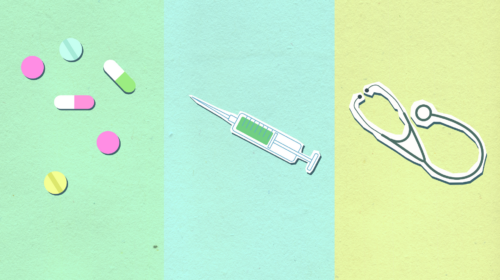The metabolic system turns meth into amphetamine, and both substances test positive for up to 72 hours. For chronic users, urine tests for meth can detect the substance for up to 5 days.
Methamphetamine Drug Facts
Methamphetamine comes with many nicknames: crystal meth, crystal, ice, meth, tina, yabba, glass. Regardless of what you call it, one thing is clear, long-term exposure to meth leads to serious addiction.
Drugs are categorized into five specific schedules determined by two factors: the drug’s dependency potential and its acceptable medical usefulness.[1] Schedule I includes substances considered to have a high potential for abuse and no accepted medical use in the United States, such as heroin. However, marijuana, also a Schedule I drug, is considered to have a lower potential for abuse compared to other Schedule I substances. Each schedule has its own specifications, with Schedule V drugs having the lowest rate of abuse.
Methamphetamine is a Schedule II drug. The drugs in this category have a high potential for abuse. Regular meth use can lead to intense physical or psychological dependency.
In the United States, about 2.5 million people admit to having used meth in the last 12 months in 2021.[2] Methamphetamine is primarily a recreational drug. However, a chemically similar substance, amphetamine, is used in medications to treat ADHD and obesity.
Effects of Methamphetamine Use
Meth can have short-term and long-term effects on your body and mind. Many people continue to use it due to the habit-forming short-term effects.[3] The most significant effect is the release of high levels of dopamine in your system. Dopamine is “the feel-good hormone,” and it rewires the brain to ask for more. This leads to increasing doses or more frequent use.
Other effects include but are not limited to:
- an increase in attention and a decrease in fatigue
- an increase in physical activity and wakefulness
- a decrease in appetite
- euphoria and rush
Users can also experience an irregular heartbeat and increased blood pressure. If your body temperature spikes, resulting in hyperthermia, you might be going through an overdose. Keep in mind that cases of severe hyperthermia can result in death.
Long-term effects of meth use have serious repercussions on health, both mental and physical.[4] Some of these are:
- Addiction
- Withdrawal (when quitting)
- Anxiety
- Confusion
- Insomnia
- Mood disturbances
- Violent behavior
The more you use methamphetamine, the higher the risk of addiction. You may begin to compulsively seek your next dose. Your brain’s molecular system and functional capabilities start to change.
You may develop tolerance to the drug, and regular day-to-day pleasures will not be enough anymore. This fuels the desire to increase the dosage.
Chronic meth users may develop psychotic episodes. Paranoia, hallucinations (both auditive and visual), and delusions can occur. Even after you’ve quit, psychotic episodes can linger for months or even years.
How Long Does Meth Stay In Urine?
Methamphetamine tends to linger in your system and is a slow-release drug. Urine, saliva, and blood tests are the most common methods used to detect it. A single dose can test positive in urine for up to five days.
Although studies can detect changes in dose intake, this generally happens under controlled environments.[5] Most tests are done via urine as drug concentration is often highest during the urine detection window.
Meth Half-Life
It takes about 9-24 hours for the amount of meth in your bloodstream to get cut in half. The lasting effects of the drug depend on:
- The dose amount
- how it is administered
- the time of day
- how quickly it is processed by your kidneys and liver
- your personal body chemistry
Can You Get A False Positive For Urine Tests?
Due to cross-reactivity, urine screening for meth can result in a false positive.[6] This happens for various reasons, particularly if the person getting tested takes other medication. The five known drugs that result in a false-negative are:
- Pseudoephedrine
- Labetalol
- Bupropion
- Trazodone
- Chlorpromazine
Ritalin, Levofloxacin, and Ofloxacinor are some drugs known to influence test results. Instant-read devices are often used for initial drug screening but can occasionally result in false positives.
Other Drug Tests For Meth
Blood Test
Testers use amphetamine screens to determine whether you have meth in your bloodstream. You might find this test under the name of amphetamine concentration screen. In most cases, a court of law or healthcare provider could request a blood test for meth screening.
If you’re experiencing an overdose, the symptoms might signal to those around you that a blood screen is needed:
- hyperactivity and high blood pressure
- rapid heartbeat
- dilated pupils
- severe agitation
- hyperthermia
- heavy sweating
- aggressiveness and severe agitation
- irrational violence
- psychosis
The test implies drawing blood from your vein through a sterile needle. The detection window timeline for such tests is around 48 hours after the last meth dose.
Hair Test
After quitting your meth habit, you can still test positive for up to 90 days if you take a meth hair test.[7] Testers would only need a single 1.5-inch segment to determine whether methamphetamine is still in your system. The detection window timeline for this test can be anywhere between 90 to 120 days.
Saliva Test
During a methamphetamine saliva test, your mouth will be swabbed with an absorbent material. It takes up to two days for meth to disappear from your saliva. If you’re asked to take a test in the first 2 days from your last dose, your test will be positive for meth.
What Influences How Long Meth Stays in Your System?

The only way to avoid testing positive for any kind of meth test is to go clean. Meth can stay in your system for 2-3 days after the last use. This timeline depends on whether you’re a casual or chronic user. Many factors can influence the meth concentration levels in your body. Of course, they can differ from person to person:
- the method of administration: meth is highly flexible and can be administered by smoking, injecting, ingesting, or snorting
- how often and for how long you use it: casual users might get it out of their systems faster than chronic users
- the amount of meth your dose contains: also called over-ramping, taking any amount of meth can lead a person to overdose
- the drug’s purity: a lot of street drugs are mixed, making them more dangerous for users
- a person’s metabolism
Treatment For Methamphetamine Abuse and Addiction
Comprehensive treatment and care for methamphetamine addiction include detox and rehab. A patient-centered, holistic approach is often the best way to treat and eliminate meth abuse and addiction. Here, experienced providers will oversee your progress and create a compassionate, supportive environment.
Detoxification from methamphetamine may involve supportive care and medications to manage withdrawal symptoms. While medications like Lorazepam and Diazepam may be used to treat symptoms like anxiety and agitation, the specific medications used depend on the individual’s needs and the treatment center’s protocols. If you experience nausea, headaches, sweats, and other withdrawal symptoms, these will alleviate your discomfort, making early recovery easier.
After the detox stage, you’ll go through a long-term treatment process that addresses behavioral issues and helps you discover the underlying causes and influences of your substance use disorder.
Seek Help For Meth Use and Get Negative Drug Tests For Life.
The best way to guarantee negative drug tests is to pursue recovery and sobriety. There is practical help available and support for your recovery journey.

























